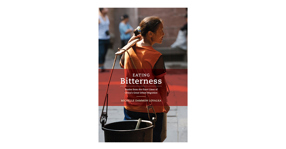We’re pleased to provide you with insights like these from Boston Private. Boston Private is now an SVB company. Together we’re well positioned to offer you the service, understanding, guidance and solutions to help you discover opportunities and build wealth – now and in the future.
The three things real inclusive leaders need to do
By: Dr. Leeno Karumanchery, Co-Founder & Head of Behavioural Sciences MESH/diversity
 |
If you're an organizational leader and you're new to "Diversity and Inclusion," I guess the first thing you have to consider is why it got onto your radar? Did it grow out of personal interest? Was it pressure from shareholders? The needs of a diversifying customer base? Were your people asking for affinity groups? Was it the #MeToo movement? George Floyd? |
Then again, maybe it's been on your radar for a while, and it just never quite cracked the top five business priorities until now. The answer to the question is important because your entry point will generally frame what you think about it, how you approach it, and perhaps most importantly, how you shape the connections and opportunities that arise from it. Simply put, is it a spoon of cod liver oil you're being forced to swallow? Or is it a vaccine that you're both willingly and purposefully injecting into your bloodstream? If it's the latter, these three keys will help you begin your journey in a meaningful and resonant way.

"... take some comfort in the knowledge that your job is not to become an expert in this field. Instead, it's to lead by example..."
1. Show your commitment
If you're a leader that genuinely sees D&I as integral to the future of your business and you want to do something real and sustainable, the first thing you have to do is take some comfort in the knowledge that your job is not to become an expert in this field. Instead, it's to lead by example. There is extensive research showing a clear inverse relationship between leadership support for change and organizational resistance. The more leaders care and commit, the less resistance there is. And conversely, the less commitment shown by executive leadership, the more avoidance, reluctance, and outright resistance you will experience. So the value and influence of Executive Stewardship cannot be overstated here.
We have to enter into this understanding that there will be people who struggle and others that actively push back. You aren't going to find a lot of crosses burning or people wearing hoods within the halls of corporate America. But you are guaranteed to hear cries of reverse racism, excuses about the lack of quality candidates in the pipeline, and some will continue to preach the values of a merit-based system, ignoring the inequities in the present "merit-based" model. Make no mistake about it; these are all quite predictable reactions, and it is through these types of nuanced and ambiguous everyday interactions that racism, sexism, heterosexism, and the like are most commonly experienced.
With this in mind, it is vital that you remove any ambiguity about your belief in the value of inclusion as a model, and your resolve in seeing inclusive change embedded into the bedrock of the organization. You won't be perfect, and in fact, it's probably best that you don't aim to be!
2. Set the right tone
Remember what I said earlier about the difference between willingly taking medicine and being forced to swallow it? Leading this kind of change requires that we prime our people with a new mental model for D&I. Unfortunately, years of poorly run and even divisive "Diversity" programs have left quite a sour taste in a lot of our mouths. Of course it's easy to blame people for their unwillingness to wash that taste out and try again, but we would be far better served to consider how we rebrand Diversity, and reframe Inclusion internally. Because diversity can be experienced as fairly incendiary and the very notion of inclusive change can raise temperatures, inclusive leaders must be able to set the emotional thermostat of their culture. Climate setting is the process whereby effective leaders set the cultural context to win the support of their people and move them towards the execution of this common goal. This ability to climate set speaks to the profound difference between management and leadership. Your ability to craft the D&I message as a "Get To" rather than a "Have To" is quite important to how quickly and how effectively you gain traction for change. If the climate is energized and hopeful with an eye towards opportunities and growth, you are far more likely to gain momentum.
3. Put the horse before the cart
Understanding that even forward-thinking organizations are hampered by history and traditions that make change difficult, it's not enough to simply be committed to engaging D&I. To do real sustainable work, we have to expand our attention beyond the momentary people-problems and take a higher-level view of Organizational Mindset and framework. This kind of commitment has to be operationalized within a mindful and systematized approach.

"... it is vital that you remove any ambiguity about your belief in the value of inclusion as a model..."
What do you really want to accomplish? What are things going to look like once you get there? By looking at inclusive change as a quantifiable, measurable process with distinct stages, benchmarks, and goals, you and your people will be better prepared and better situated for success. In my experience, there is no better way to establish this kind of roadmap outside a good visioning process.
Visioning helps to establish a clear path, replete with concrete steps, understanding of resistance to change, and present state deficiencies.
All that said…
Traditionally engaged as a tick box exercise in the corporate world, D&I is about so much more than what it has been. From unconscious bias trainings with no real correlate to systemic change, to "diverse" board appointments that amount to little more than symbolic gestures, D&I has been for all intents and purposes, a bit of a shell game allowing us to talk big and feel good while doing very little systemic work. D&I cannot be engaged as a piecemeal exercise anymore. Not if we are serious about it. Like any other organizational change initiative, it requires strategic thinking and operational alignment. It must drive from the top down. That's why leadership, "real leadership," is so vital to doing D&I well.
About MESH/diversity
MESH/diversity empowers D&I professionals with the strategic support, tools, metrics, and data needed to drive the success across their organizations. Learn more about MESH/diversity.














